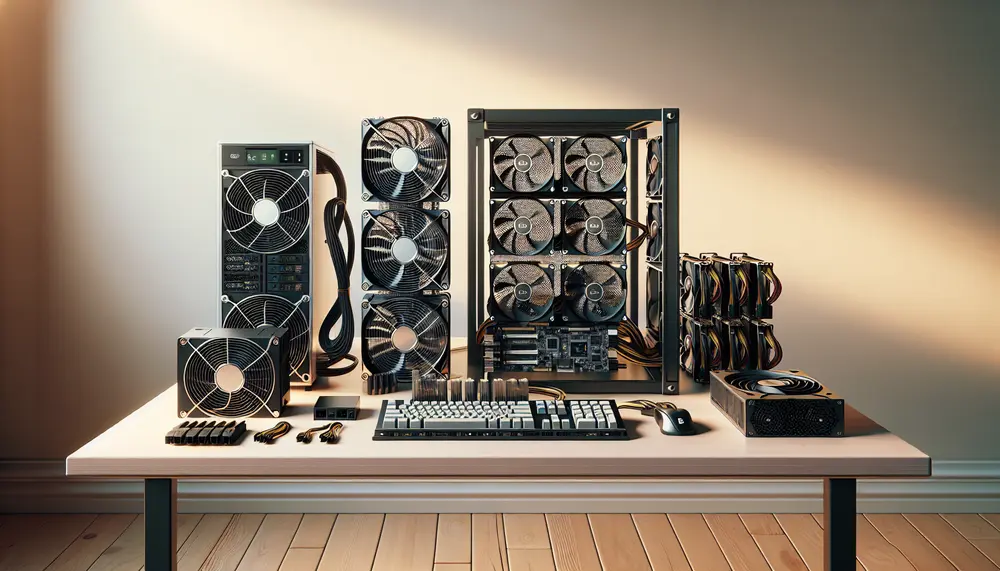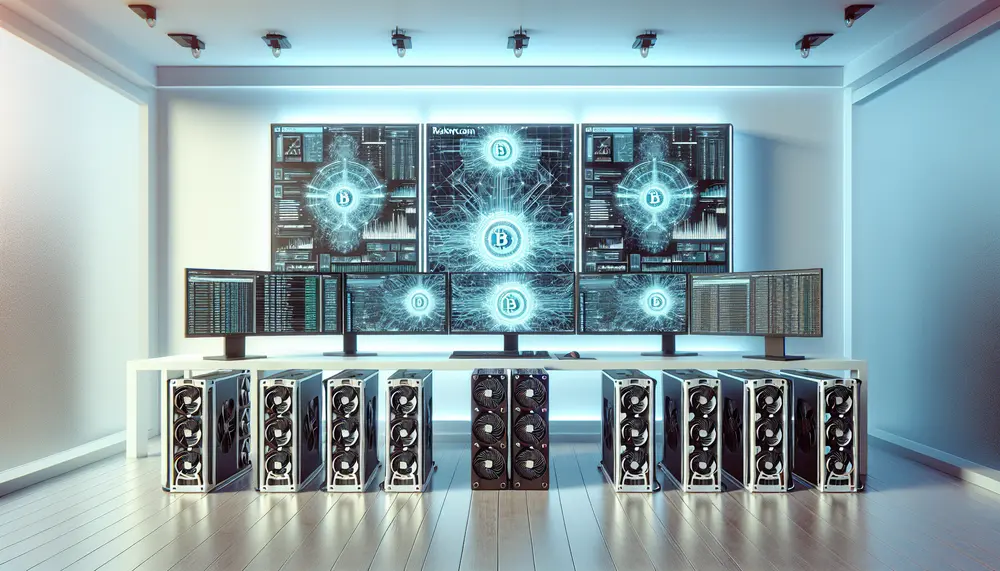N-Pool
N-Pool
Introduction to N-Pool in Bitcoin Mining
When it comes to the world of Bitcoin Mining, one term you may come across is N-Pool. The N-Pool, also referred to as a Bitcoin Mining Pool, forms a crucial part of the Bitcoin mining process. But what exactly does this term mean, and how does it play a role in Bitcoin Mining? Let's break it down.
What is an N-Pool?
An N-Pool refers to a mining pool in the context of cryptocurrencies like Bitcoin. It is a collection of individual miners who combine their computational power together. They share the computational resources and split the earned Bitcoin rewards among the pool members. The "N" stands for 'Number of participants' and refers to the number of miners involved in the pool.
Why is An N-Pool Important in Bitcoin Mining?
Joining an N-Pool is beneficial for individual miners as it increases the likelihood of earning Bitcoin rewards. Bitcoin Mining is commonly seen as a race, where the first miner who solves a complex mathematical problem is the one who gets rewarded. As such, by joining forces in an N-Pool, miners can combine their computational power, increasing the rate of solving these mathematical problems and thus, enhancing their chances of earning Bitcoin rewards.
Understanding the Working of an N-Pool
In an N-Pool, miners contribute to the process by using their computational power to solve complex mathematical problems. These problems are, in fact, the blocks required for the blockchain ledger. Once a problem is solved, or a block is completed, it is added to the Bitcoin blockchain, and a reward in the form of Bitcoin is given. This Bitcoin reward is then split among the members of the N-Pool, depending on the amount of computational power each member contributed.
The Pros and Cons of an N-Pool
There are several benefits and drawbacks when it comes to joining an N-Pool. On the positive side, joining an N-Pool can significantly increase the chances of earning Bitcoin rewards as the collective computational power is higher than that of an individual miner. It also provides more regular, albeit smaller, returns compared to mining individually.
However, on the downside, the Bitcoin rewards earned through an N-Pool are split among the members. This means that while the chances of earning rewards are higher, the individual reward received may be smaller than the reward earned when mining individually.
Blog Posts with the term: N-Pool

Flux mining involves earning cryptocurrency by contributing to the network's security and efficiency, requiring specific hardware like powerful GPUs (e.g., NVIDIA RTX 3090) and software such as GMiner or LolMiner. Additionally, setting up a secure FLUX wallet is essential for...

Digibyte solo mining involves using your own hardware to independently earn Digibyte (DGB) coins, offering potential rewards but also challenges. The process requires selecting the right algorithm and hardware, setting up appropriate software, and possibly configuring a mining pool for...

Ravencoin dual mining allows miners to maximize profits by simultaneously mining Ravencoin and another cryptocurrency, such as Zilliqa, using the same hardware. This guide provides step-by-step instructions on setting up a mining rig for dual mining, highlighting benefits like decentralization,...

The article provides a comprehensive guide on setting up and optimizing Ravencoin mining on an Ubuntu Linux system, covering steps from preparing the system by updating packages and verifying hardware compatibility to installing necessary dependencies like CUDA Toolkit and configuring...

This guide simplifies the process of mining Flux Coin, a decentralized cryptocurrency using the ASIC-resistant ZelHash algorithm, by detailing essential steps from setting up your mining rig to optimizing it for efficiency. It covers hardware requirements, choosing appropriate mining software...

Flux Dual Mining allows miners to simultaneously mine two different cryptocurrencies using specialized software, maximizing hardware utilization and potentially doubling earnings without significant additional power consumption. To start dual mining, you need a powerful GPU, appropriate mining software like lolMiner...

The article provides an in-depth overview of the Flux mining algorithm, known as ZelHash, which is a modified version of Equihash designed to be ASIC-resistant and promote decentralization by making mining accessible to those using consumer-grade hardware. It explains how...

Understanding Alephium mining pool stats is essential for maximizing earnings, as these metrics provide insights into performance indicators like hash rate, block rewards, and pool fees. By accessing and interpreting these stats through various platforms such as mining software or...

Mimblewimble Coin (MWC) mining involves validating transactions using the Mimblewimble protocol, which enhances privacy and scalability. To start mining MWC, you need to choose between GPUs or ASICs for your hardware, set up a mining rig with appropriate software, and...

Choosing the right Horizen mining pool is crucial for optimizing your mining efficiency and profitability, with key factors including low fees, high uptime, balanced hash distribution, regular payouts, and robust support resources. Understanding these aspects will help you make an...

The article provides a comprehensive guide on optimizing flux mining hardware, covering the essentials of GPUs and ASICs, effective management strategies, and the role of minerstat® in maximizing efficiency. It emphasizes understanding the balance between cost, efficiency, and performance when...

Flux solo mining allows individuals to mine Flux (ZelCash) independently, offering the potential for full rewards but also bearing all risks; this guide covers essential steps from setting up your rig and wallet to choosing and configuring compatible software. Understanding...

Flux mining can be highly profitable by understanding its reward system, choosing the right hardware (GPUs vs. ASICs), and optimizing software and operating systems for efficiency. Additionally, leveraging parallel mining assets and participating in programs like the Titan Program can...

In 2023, Flux CPU mining is an emerging option for crypto enthusiasts, involving the use of a computer's central processing unit to solve mathematical problems and earn rewards in Flux cryptocurrency. The article details the setup process using XMRig software,...

